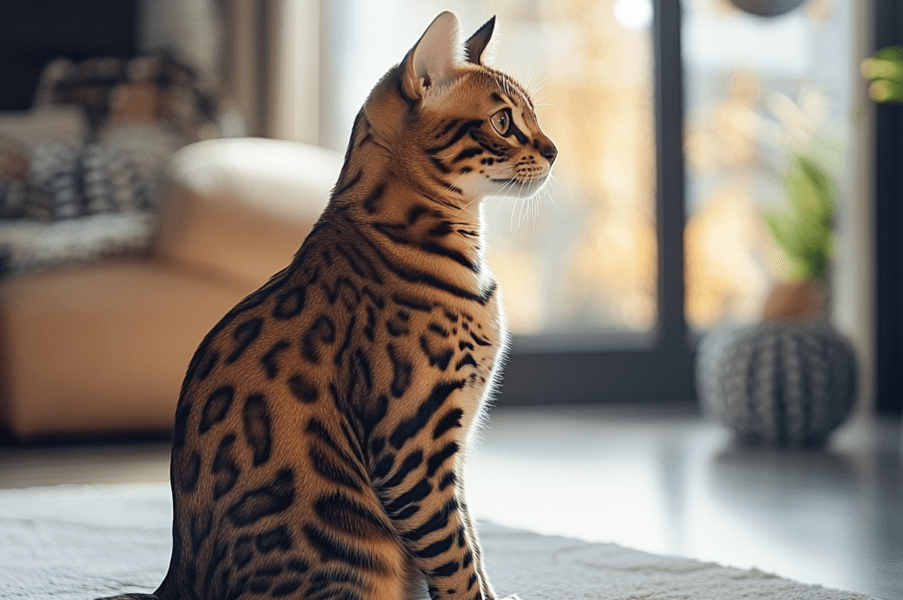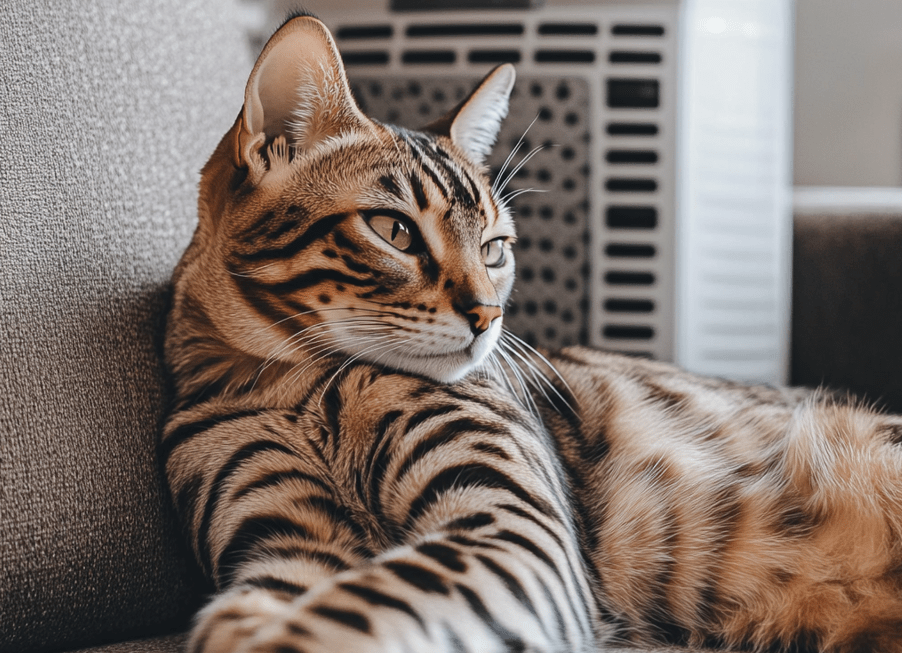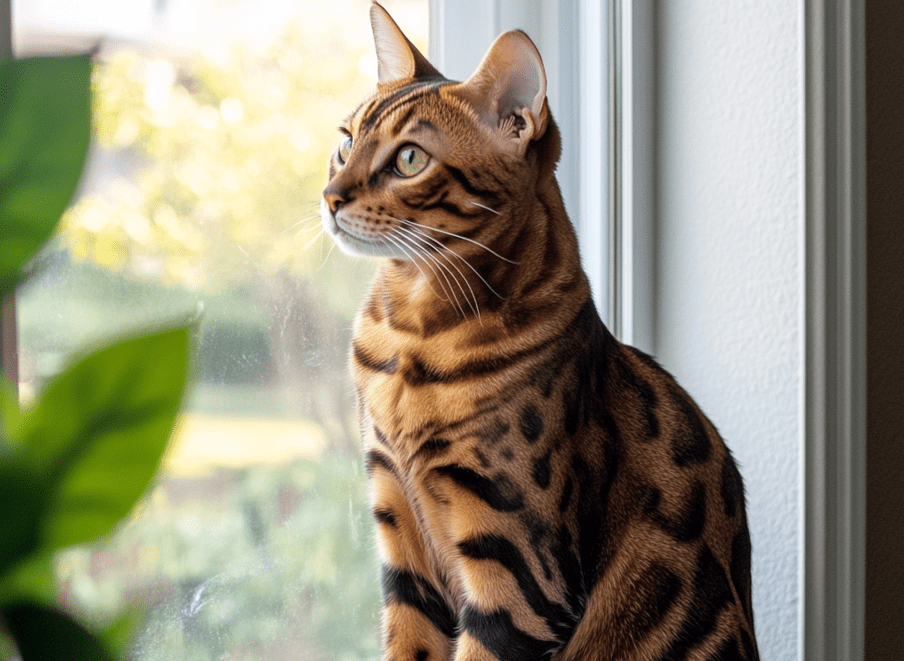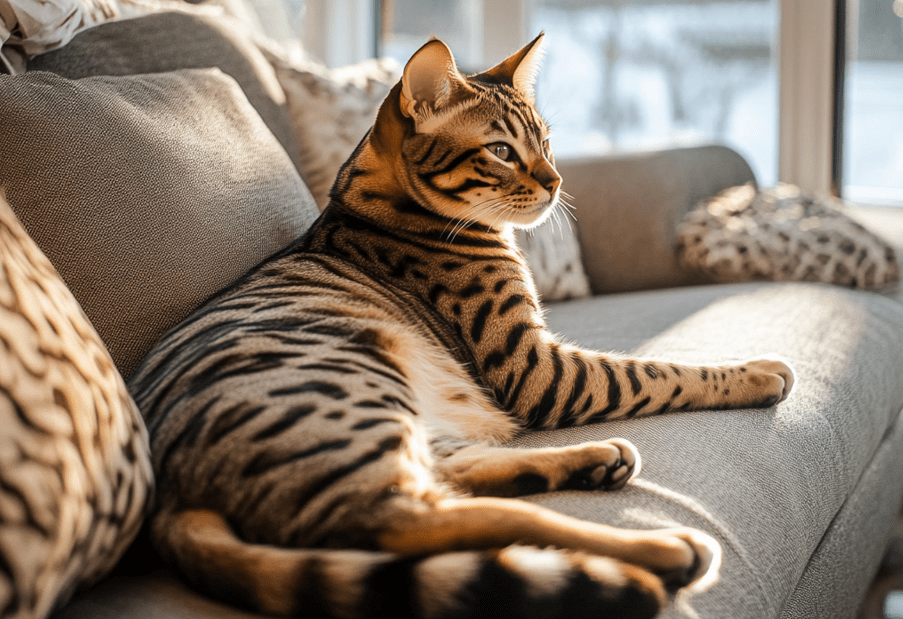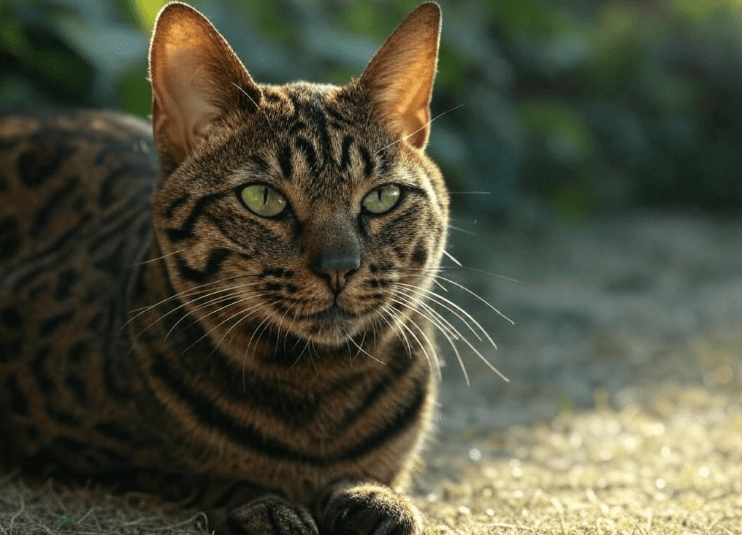
Bengal cats, with their vibrant energy and curious nature, bring joy and excitement to any home. However, their playful tendencies and inquisitive personalities mean pet owners must carefully consider their household environment, including indoor and outdoor plants. Choosing safe plants for a Bengal cat household is essential to ensure your feline friend stays healthy while you enjoy a lush, green space. This comprehensive guide explores non-toxic plants that are safe for Bengals, tips for integrating them into your home, and strategies to protect both your plants and your cat.
Why Safe Plants Matter for Bengal Cats
Bengal cats are known for their intelligence, agility, and love of exploration. These traits, rooted in their Asian leopard cat ancestry, make them prone to chewing, batting, or digging into household plants. While this behavior is natural, many common plants are toxic to cats, potentially causing symptoms ranging from mild digestive upset to severe health issues like kidney failure.
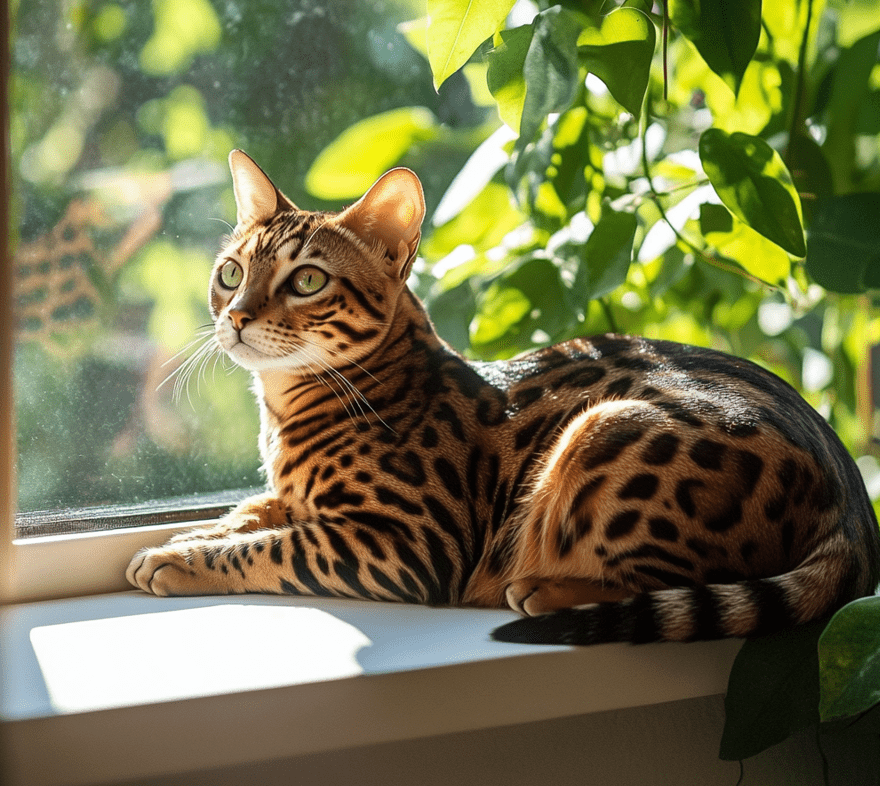
By selecting safe plants for a Bengal cat household, you can:
Protect Your Cat’s Health: Non-toxic plants eliminate the risk of poisoning from ingestion.
Encourage Natural Behaviors: Safe plants allow Bengals to chew or play without harm, satisfying their instincts.
Enhance Your Home: Pet-safe greenery adds beauty and improves air quality without compromising safety.
Reduce Stress: A cat-friendly environment minimizes the need for constant supervision, creating a harmonious home.
Understanding the importance of plant safety sets the foundation for a thriving Bengal cat household.
The Risks of Toxic Plants for Bengal Cats
Before diving into safe plant options, it’s critical to recognize the dangers of toxic plants. Common houseplants like lilies, pothos, and sago palms can cause severe reactions in cats, including:
Gastrointestinal Issues: Vomiting, diarrhea, or loss of appetite.
Neurological Symptoms: Tremors, seizures, or disorientation.
Organ Damage: Kidney or liver failure, particularly from lilies or dieffenbachia.
Bengals, with their tendency to nibble on foliage, are especially vulnerable. Always research a plant’s toxicity before bringing it into your home, and consult resources like the ASPCA’s Toxic and Non-Toxic Plant List for guidance.
Top Safe Plants for a Bengal Cat Household
Below is a curated list of non-toxic plants that are safe for Bengal cats. These plants are not only harmless but also complement the aesthetic and environmental needs of a cat-friendly home.
1. Spider Plant (Chlorophytum comosum)
Spider plants are a top choice for Bengal cat households due to their durability and playful appeal.
Why It’s Safe: Non-toxic to cats, even if chewed.
Benefits: Produces dangling “spiderettes” that Bengals love to bat at, encouraging play.
Care Tips: Thrives in indirect light; water when soil is dry.
Placement: Hang in a basket to keep leaves out of reach while allowing safe interaction.
2. Boston Fern (Nephrolepis exaltata)
Boston ferns add lush greenery and are completely safe for cats.
Why It’s Safe: No toxic compounds, even if nibbled.
Benefits: Feathery fronds mimic grass, satisfying chewing instincts.
Care Tips: Prefers high humidity and indirect light; mist regularly.
Placement: Place on a high shelf or in a hanging pot to protect from excessive digging.
3. Catnip (Nepeta cataria)
Catnip is a feline favorite that’s both safe and stimulating.
Why It’s Safe: Non-toxic and causes a harmless euphoric reaction in most cats.
Benefits: Encourages play and reduces stress; can be grown indoors or outdoors.
Care Tips: Needs full sun and well-drained soil; pinch back to promote growth.
Placement: Grow in a pot to control access and prevent overindulgence.
4. Areca Palm (Dypsis lutescens)
This elegant palm adds a tropical vibe without posing risks to Bengals.
Why It’s Safe: Non-toxic, even if leaves are chewed.
Benefits: Tall, arching fronds provide a climbing or hiding spot for cats.
Care Tips: Requires bright, indirect light and regular watering.
Placement: Position in a sturdy pot to prevent tipping from playful cats.
5. Calathea (Calathea spp.)
Calatheas, with their striking foliage, are safe and visually appealing.
Why It’s Safe: No toxic properties, safe for chewing or brushing against.
Benefits: Vibrant patterns add aesthetic value; low-growing varieties suit small spaces.
Care Tips: Thrives in low to medium light and high humidity.
Placement: Keep on a stable surface away from high-traffic cat zones.
6. Wheatgrass (Triticum aestivum)
Wheatgrass is a cat-friendly edible plant that mimics outdoor grass.
Why It’s Safe: Non-toxic and aids digestion when eaten in small amounts.
Benefits: Satisfies chewing instincts and provides fiber.
Care Tips: Grow in shallow trays with ample sunlight; replace every few weeks.
Placement: Place in an accessible spot for supervised chewing.
7. African Violet (Saintpaulia)
African violets offer colorful blooms without risking your cat’s health.
Why It’s Safe: Non-toxic, even if petals or leaves are ingested.
Benefits: Compact size fits small spaces; flowers add vibrancy.
Care Tips: Needs bright, indirect light and consistent moisture.
Placement: Position on a high windowsill to deter curious paws.
8. Bamboo (Bambusa spp.)
True bamboo (not “lucky bamboo,” which is toxic) is a safe, sturdy option.
Why It’s Safe: Non-toxic and resilient to cat play.
Benefits: Adds height and structure to your space; durable stalks withstand batting.
Care Tips: Prefers bright light and moist soil.
Placement: Use a heavy pot to prevent knocking over.
How to Integrate Safe Plants into a Bengal Cat Household
Selecting safe plants is only half the battle. Integrating them into your home requires careful planning to protect both your plants and your Bengal. Follow these steps:
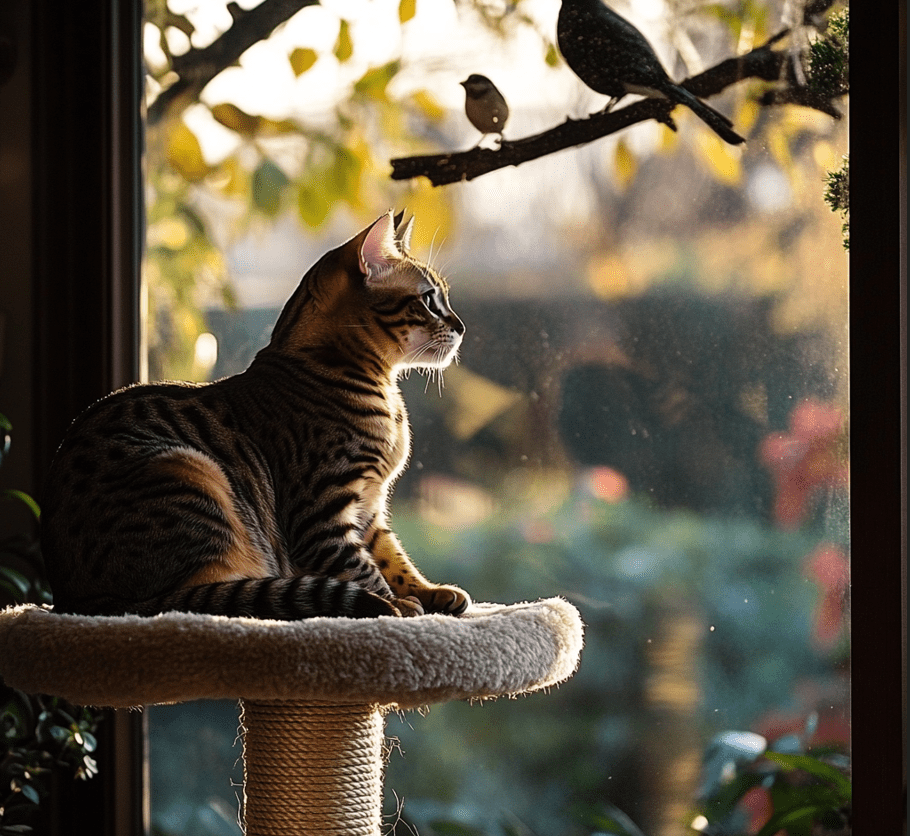
Step 1: Assess Your Space
Evaluate your home for plant placement based on:
Light Conditions: Match plants to areas with appropriate sunlight (e.g., spider plants for indirect light, catnip for full sun).
Cat Activity Zones: Identify high-traffic areas where Bengals climb, jump, or rest.
Safety: Avoid placing plants near edges where they can be knocked over.
Step 2: Choose Cat-Safe Planters
Opt for sturdy, heavy pots that resist tipping. Consider:
Ceramic or Terracotta Pots: Heavy and stable but ensure they’re glazed to prevent water damage.
Hanging Baskets: Ideal for spider plants or ferns to keep them out of reach.
Wall-Mounted Planters: Secure options for small plants like African violets.
Step 3: Protect Plants from Overzealous Cats
Bengals may dig, chew, or knock over plants. Use these strategies:
Cover Soil: Place decorative rocks or pinecones on soil to deter digging.
Use Barriers: Install plant cages or mesh covers for delicate plants.
Elevate Plants: Place on high shelves or in hanging pots to limit access.
Provide Alternatives: Offer cat grass or catnip to redirect chewing instincts.
Step 4: Monitor Plant Health
Regularly check plants for signs of cat-related damage, such as chewed leaves or disturbed soil. Prune damaged areas and adjust placement if needed.
Step 5: Train Your Bengal
Discourage unwanted plant interaction through:
Positive Reinforcement: Reward your cat for ignoring plants or playing with toys instead.
Deterrents: Use pet-safe sprays with citrus or bitter scents to discourage chewing.
Distraction: Provide engaging toys or a cat tree to divert attention.
Common Mistakes to Avoid
To create a harmonious Bengal cat household with safe plants, avoid these pitfalls:
Assuming All “Natural” Plants Are Safe: Even non-toxic plants can cause mild digestive upset if overeaten. Monitor consumption.
Ignoring Plant Maintenance: Overwatered or neglected plants may attract pests, which can harm cats.
Using Unstable Planters: Lightweight pots are easily tipped by playful Bengals, risking injury or mess.
Overlooking Toxic Lookalikes: Ensure you’re purchasing true bamboo, not lucky bamboo, and verify plant species before buying.
Neglecting Supervision: Newly introduced plants should be monitored to gauge your cat’s reaction.
Additional Tips for a Cat-Friendly Green Space
Beyond choosing safe plants, consider these strategies to enhance your Bengal cat household:
Create a Cat-Safe Garden
If you have outdoor space, grow safe plants like catnip, wheatgrass, or valerian in a designated cat garden. Use raised beds or fenced areas to protect delicate plants.
Incorporate Vertical Spaces
Bengals love climbing. Pair safe plants with cat trees or shelves to create a jungle-like environment that satisfies their instincts.
Rotate Plants Seasonally
To keep your home dynamic, rotate plants based on seasons or your cat’s interest. For example, grow wheatgrass in spring and switch to catnip in summer.
Educate Household Members
Ensure everyone in your home knows which plants are safe and how to maintain them. This prevents accidental introduction of toxic plants.
Consult a Veterinarian
If your Bengal shows unusual behavior after interacting with a plant (even a safe one), consult a vet. Some cats may have sensitivities to certain non-toxic plants.
Conclusion
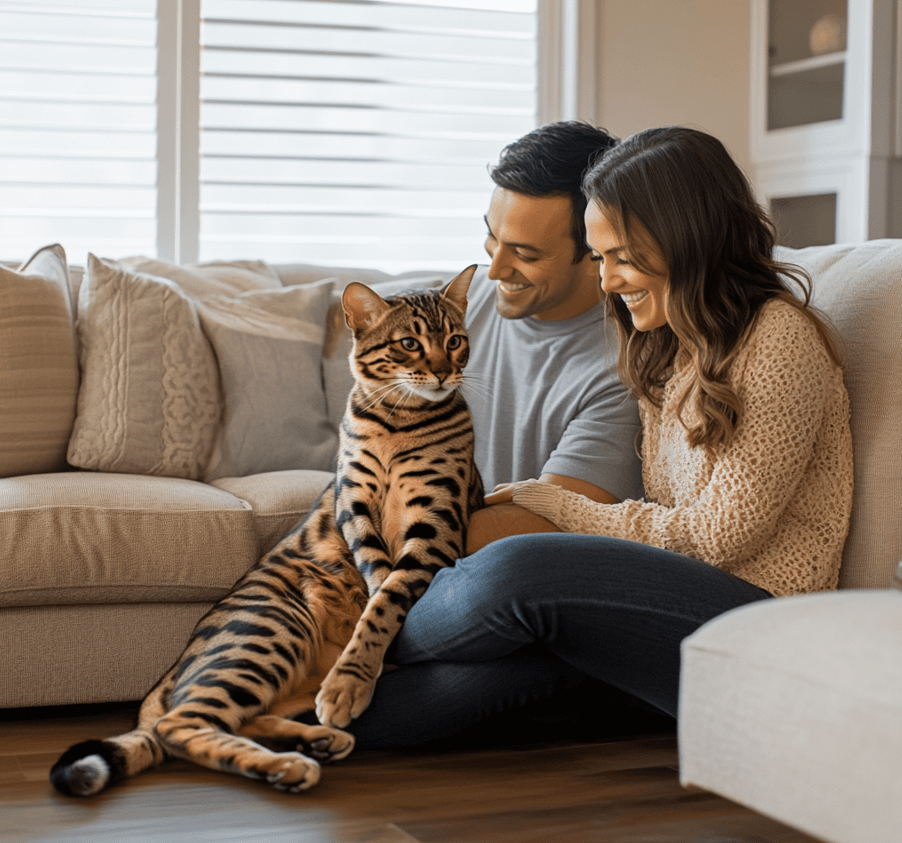
Creating a Bengal cat household filled with safe plants is a rewarding way to blend your love for greenery with your cat’s well-being. By choosing non-toxic plants like spider plants, Boston ferns, and catnip, and integrating them thoughtfully into your home, you can provide a stimulating, safe environment for your Bengal. With careful planning, sturdy planters, and proactive training, you’ll foster a space where both your plants and your cat thrive.
Start building your cat-friendly green oasis today. By following the guidance in this article, you’ll create a Bengal cat household that’s as beautiful as it is safe, ensuring your feline companion enjoys a healthy, happy life.

